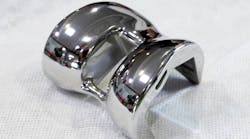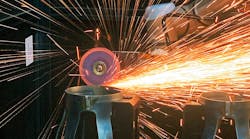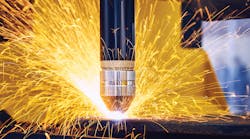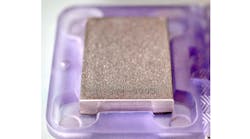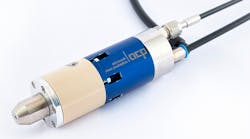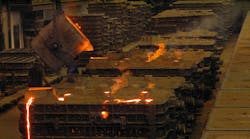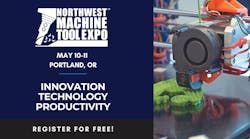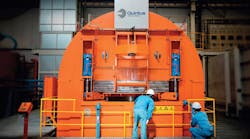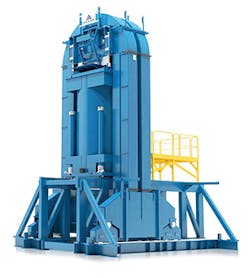No casting is perfect, but in the effort to achieve some near facsimile of perfection metalcasters are embracing a range of technologies that are outside typical functions of foundries. Heat-treating and impregnation are two notable examples of this. Another is hot isostatic pressing (HIP.)
Hot isostatic pressing is used to reduce the porosity and increase the density of castings and other metal parts; additive manufactured or 3D printed parts are an area of some increasing activity for HIP operations, too. It’s also used to improve the mechanical properties of some ceramic materials.
In the process, a casting or workpiece is subjected to elevated temperature and isostatic gas pressure in a high-pressure chamber. Inert gas (e.g., argon) is used to avoid a chemical reaction with the part material. As the chamber is heated and the pressure within increases, the workpiece is subjected to pressure from all sides (that’s the meaning of “isostatic”), which concentrates its density.
Alcoa Adding Hot-Isostatic Pressing for Jet-Engine Parts
GE Aviation Wants Alternatives to Investment Castings
This offers an alternative to impregnation to remove surface imperfections, but it also can be used to address the distinct problem of microporosity or internal voids, and improve fatigue resistance in the cast part. This is a boon to the expanding market for aerospace components, where the volume of lightweight castings for critical applications represents a significantly high and rising value to manufacturers – and associated risk to system builders and operators.
Last year, Quintus Technologies (at the time known as Avure Technologies) was contracted to install a $22-million HIP system for the Alcoa Howmet investment casting operation in Whitehall, MI. The aerospace-focused plant already had eight HIP systems in place, and the new machine (with a 5.25-ft. diameter by 8.5-ft high work zone, it is the largest) was important to add capacity for the rising volume of titanium and nickel-alloy jet-engine components being produced and processed there.
At the time of the order, the new Alcoa press also was described as the largest HIP unit in the U.S. operating at 2,000 bar (29,000 psi) and 1,250°C (2282°F), according to the developer.
The new machine also supports Alcoa’s growing output of 3D-printed parts. It is the ninth and largest HIP system Alcoa has installed at Whitehall.
“Alcoa Howmet is well known for meeting the exacting demands of the aerospace and industrial markets with precision investment castings of superalloy, titanium, and aluminum alloys,” stated Peter Henning, business unit director for Quintus’ Advanced Material Densification. “When one of the most experienced and skillful HIP users in the world chooses our solution, it makes a strong quality statement for our Quintus technology.”
The demand for HIP technology is not limited to high-flyers like Alcoa. Earlier this year Quintus Technologies booked an order to supply two HIPs to China’s Anhui Yingliu Group, just a few months after that steel casting producer had started up the world’s largest 2,000-bar HIP system.
“The interest in hot isostatic pressing is continuously increasing, and when a well-known company like Anhui Yingliu Group combines its broad material competence with the most advanced and productive way of processing materials, it is a recipe for success,” according to Quintus CEO Jan Söderström.
The Scientific Appeal
The scientific appeal of HIP to metalcasters is quite clear. What’s becoming clearer is the commercial evidence of the technology’s advantages. Dr. Johan Hjärne, global business development manager at Quintus, has argued in a white paper that improvements in operating costs for the system have doubled productivity, and that now heat treatment of castings can be applied directly in the HIP system, without increasing processing costs or time.
To begin, Hjärne argues that HIP is the standard production route for eliminating surface pores in castings for aerospace, IGT, oil-and-gas, and high-end automotive engine markets, because the combination of heat and pressure results in fully densified material. “In the HIP process it makes no difference if the porosity varies from 0.5% to 5%,” he writes. “All internal voids will be eliminated.”
The first advantage of HIP for metalcasters is process efficiency, according to Hjärne: it decreases scrap loss and the cost of defective castings; lessens (or eliminates) the time and cost needed for non-destructive testing; and expands the options for designing parts by different casting methods.
A further advantage is the possibility of achieving maximum material density. This reduces scatter in the material properties, and improves the machined surface quality of the parts.
Lastly, there is the advantage of improved mechanical properties. Cast parts’ fatigue life is increased by up to 10X, Hjärne notes, with increased ductility and impact resistance.
While HIP technologies have been commercially available for about 40 years, the developers of these systems are endeavoring to reduce cycle times in order to increase productivity, and in that way to increase the return-on-investment time for metalcasters or other manufacturers adopting HIP. Hjärne makes the point that the cooling stage is the most time-consuming aspect of the HIP process sequence (“unless the pressure vessel design enables forced cooling,” he writes.)
Quintus offers a patented cooling technology, Uniform Rapid Cooling (URC), that it claims cools parts more than 10 times faster than other systems now available. But, according to Hjärne’s report, URC can also cool fast enough to heat-treat the castings.
“During uniform rapid cooling the pressure is controlled and maintained at the maximum operated pressure level throughout the entire cooling curve, accelerating the process considerably,” the Quintus expert writes. “The combination of faster turnaround time and the potential for more cycles per day, together with the capability of heat-treating materials, makes the Quintus HIP the perfect heat treatment machine.”
If rapid cooling and other performance improvements can convince metalcasters of the affordability of HIP operating costs, then interest in adopting the technology will continue to grow. It is not simply the opportunity to improve the defects of cast parts, but the flexibility that HIP makes possible for operations that must consider every option to expand their functionality and enhance their revenue opportunities. High-value customers like aerospace OEMs demand performance flexibility in their suppliers, and the opportunity to add technology capable of adding value to finished parts, of treating multiple alloys and materials, or even parts produced by processes other than casting — and all this at an apparently affordable operating cost — is one that savvy metalcasters may not see again.

